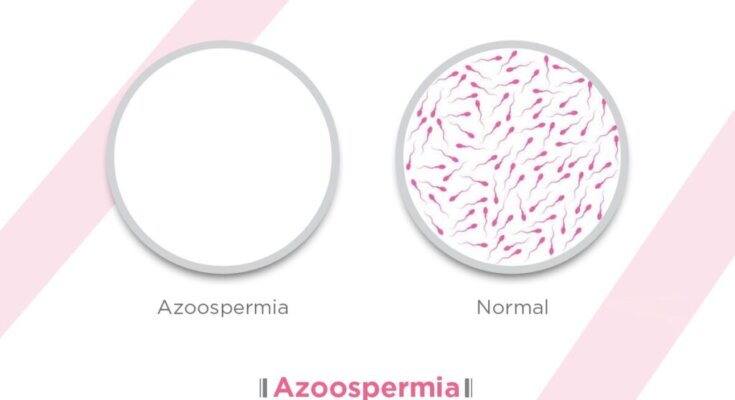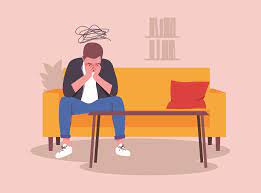Azoospermia is a medical condition where a man’s semen contains no sperm, leading to infertility. It affects approximately 1% of the male population and is responsible for about 10-15% of all cases of male infertility. While this diagnosis can be disheartening, advances in medicine offer a variety of treatment options that give many men the opportunity to father children.
Table of Contents
Types of Azoospermia
There are two primary types of azoospermia treatment in islamabad, and understanding which one you have is key to determining the most effective treatment:
- Obstructive Azoospermia (OA): This occurs when sperm production is normal in the testes, but a blockage in the reproductive tract prevents sperm from being released into the semen. The blockage can be due to infections, injuries, prior surgeries, or congenital abnormalities.
- Non-Obstructive Azoospermia (NOA): In this type, the problem lies in sperm production. The testes are either not producing any sperm, or the sperm production is so low that none make it to the semen. This can result from genetic conditions, hormonal imbalances, or testicular damage.
Treatment Options for Azoospermia
The treatment for azoospermia depends on its type and the underlying cause. Here’s an overview of the common treatment options:
1. Treatment for Obstructive Azoospermia
Since OA involves a physical blockage preventing sperm from reaching the semen, the treatment focuses on removing or bypassing the blockage. The options include:
Surgical Treatment
- Vasovasostomy: This is a surgery to reverse a vasectomy, which is a common cause of obstructive azoospermia. During this procedure, the severed ends of the vas deferens are reconnected to allow sperm to flow into the semen.
- Epididymovasostomy: In cases where the blockage is located in the epididymis (a small organ where sperm mature), this surgery reconnects the epididymis to the vas deferens, allowing sperm to bypass the blockage.
Sperm Retrieval Techniques
- Percutaneous Epididymal Sperm Aspiration (PESA): In cases where surgery isn’t possible or desired, PESA is a minimally invasive procedure that involves using a needle to extract sperm directly from the epididymis.
- Testicular Sperm Extraction (TESE): Sperm can also be directly retrieved from the testicles. This procedure involves taking small tissue samples from the testicles, from which sperm are extracted for assisted reproductive techniques like IVF or ICSI (Intracytoplasmic Sperm Injection).
2. Treatment for Non-Obstructive Azoospermia
Treatment for NOA is more complex, as it involves improving or stimulating sperm production in men where it is limited or absent. Treatment options include:
Hormonal Therapy
- If hormonal imbalances (such as low testosterone or issues with the pituitary gland) are causing the azoospermia, medications can sometimes correct these issues. Hormonal treatments like human chorionic gonadotropin (hCG) or clomiphene citrate are used to stimulate sperm production.
- Gonadotropin therapy may also be prescribed to boost the production of reproductive hormones.
Surgical Sperm Retrieval
- Micro-TESE (Microsurgical Testicular Sperm Extraction): In cases where sperm production is minimal, micro-TESE involves a highly precise surgical technique to find and extract sperm from the testicles. This sperm can then be used for ICSI to achieve fertilization.
Lifestyle and Supplementation
- While there are no guaranteed natural cures for azoospermia, some lifestyle changes and supplements may improve sperm health. Reducing exposure to environmental toxins, improving diet, quitting smoking, and limiting alcohol can all positively impact sperm production. Supplements such as coenzyme Q10, L-carnitine, and zinc are sometimes recommended to support overall reproductive health.
Genetic Counseling and Testing
- For men with genetic causes of azoospermia, such as Klinefelter syndrome or Y-chromosome microdeletions, genetic counseling can provide insight into the likelihood of passing these conditions to children. While the condition may not always be reversible, sperm retrieval for use in assisted reproductive technology (ART) may still be possible in some cases.
3. Assisted Reproductive Technologies (ART)
In both types of azoospermia, ART plays a critical role in helping couples conceive. The most common ART treatments for azoospermia include:
- In Vitro Fertilization (IVF): IVF involves combining a man’s sperm with a woman’s egg in a laboratory to create embryos. Once embryos are formed, one or more are implanted into the woman’s uterus.
- Intracytoplasmic Sperm Injection (ICSI): ICSI is a more specialized form of IVF. In this procedure, a single sperm is injected directly into an egg. ICSI is often used in azoospermia cases where only a small number of sperm can be retrieved from the testes.
4. Donor Sperm
For some men, particularly those with severe non-obstructive azoospermia where no sperm can be retrieved, using donor sperm may be the best option to achieve pregnancy. Couples can choose a donor through a sperm bank or donor program, ensuring that the sperm used is screened for health and genetic conditions.
Emotional and Psychological Support
A diagnosis of azoospermia can be emotionally challenging. Couples struggling with infertility often experience stress, anxiety, and feelings of inadequacy. It’s important to seek counseling or join a support group to cope with the emotional aspects of infertility. Many fertility clinics offer access to counselors who specialize in helping individuals and couples navigate their fertility journey.
Conclusion
While azoospermia can be a difficult diagnosis to face, many treatment options are available. With the help of an experienced fertility specialist, couples have a good chance of overcoming this condition and achieving their dream of parenthood. Whether through medical interventions, surgical procedures, or assisted reproductive technologies, there are pathways to building a family, even for men facing infertility.
If you or your partner have been diagnosed with azoospermia, reach out to a fertility clinic to explore your treatment options and take the first step toward achieving a successful pregnancy.
FAQs
Q1. Is azoospermia curable?
It depends on the type and cause of azoospermia. Obstructive azoospermia can often be treated surgically, while non-obstructive azoospermia may require hormonal therapy, sperm retrieval, or assisted reproductive technologies.
Q2. Can azoospermia be prevented?
While some genetic causes of azoospermia cannot be prevented, avoiding exposure to harmful chemicals, maintaining a healthy lifestyle, and addressing infections early can help reduce the risk of developing azoospermia.
Q3. Can men with azoospermia father children?
Yes, many men with azoospermia can father children with the help of fertility treatments like sperm retrieval, IVF, and ICSI. In cases where no sperm can be retrieved, using donor sperm is also an option.
Q4. What is the success rate of sperm retrieval in azoospermia patients?
Success rates vary depending on the type of azoospermia and the specific sperm retrieval technique. For obstructive azoospermia, sperm retrieval success rates are often above 90%. For non-obstructive azoospermia, success rates can range from 30-70%.




